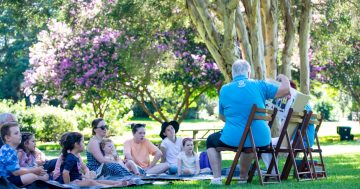
Bea Horacek has a special link to the popular UK TV series Call the Midwife. Photo: Michele Tydd.
Newly-minted primary school teacher Bea Horacek arrived at her first post in London’s East End in 1966, unaware she was smack in the middle of an underprivileged suburb destined for worldwide fame.
When the 21-year-old from Sussex was assigned to Poplar, it rang no bells because it would be nearly 50 years before it became the setting for the BBC’s Call the Midwife, one of the UK’s most popular historical dramas.
“Back then, Poplar bore little resemblance to the on-screen suburb because most of it had been rebuilt after it was flattened in World War II,” says Bea, who is now 79 and living in Farmborough Heights with husband, David.
The series, filmed in a Surrey studio and the historic Chatham Dockyard in Kent, focuses on midwifery and struggling families in the 1950s and ’60s in the East End, in an endearing way that captured 10 million viewers in the UK in its first season in 2012.
Call the Midwife, now popular worldwide, has clocked up 13 series and has been renewed for two more seasons until 2026.
Bea says it was exciting when the show first aired because of her personal link.
“And it was a bit of a thrill when one of the characters mentioned Chrisp Street Market, which I had visited on a number of occasions,” she says.
“What I liked about the show was that it encapsulated the strong spirit of support which still existed when I was there, much of which came from church and welfare organisations.
“Even our school, Susan Lawrence Primary School, was named after a social worker.”

The UK series is popular throughout the world. Photo: Neal Street Productions/BBC.
Bea says residents in the ’60s, in her experience, differed little from those in the series.
“Most of the fathers in my time worked on the wharves and most residents had broad cockney accents, including the children. They were good kids, although one little boy set the school piano alight in second class, but he’d calmed down by the time he reached my class [third class],” Bea recalls with a chuckle.
“The parents were rarely seen, apart from prize-giving day or if they were called up to the school for any reason – their attitude was, ‘You’re there to teach, so get on with it’.”
Every year, Bea and a few of her colleagues would take the third and fourth-class children to the Isle of Wight for a fortnight.
“One week was spent on schoolwork and the other was for holiday fun, and for many of the children it was the first time they had crossed the Thames, let alone gone on holiday,” she says.
“I remember one little girl who was enthralled when she tasted fresh milk from one of the island’s cows.
“It was a treat after drinking the awful stuff known as sterilised milk, which tasted metallic. The mothers bought it mainly because they had no fridge and it lasted longer.”
Bea says that over the years when Call the Midwife popped up in conversation, it became a great point of interest when she mentioned she had worked there around that time.
Bea’s favourite character is the doctor’s wife, Shelagh Turner, formerly Sister Bernadette, “because she’s been through a lot in life and she mirrors the show’s theme of compassion”.
These days, Bea is a member of the Keiraville CWA and, like her husband, a volunteer with the Farmborough Heights Rural Fire Service.









